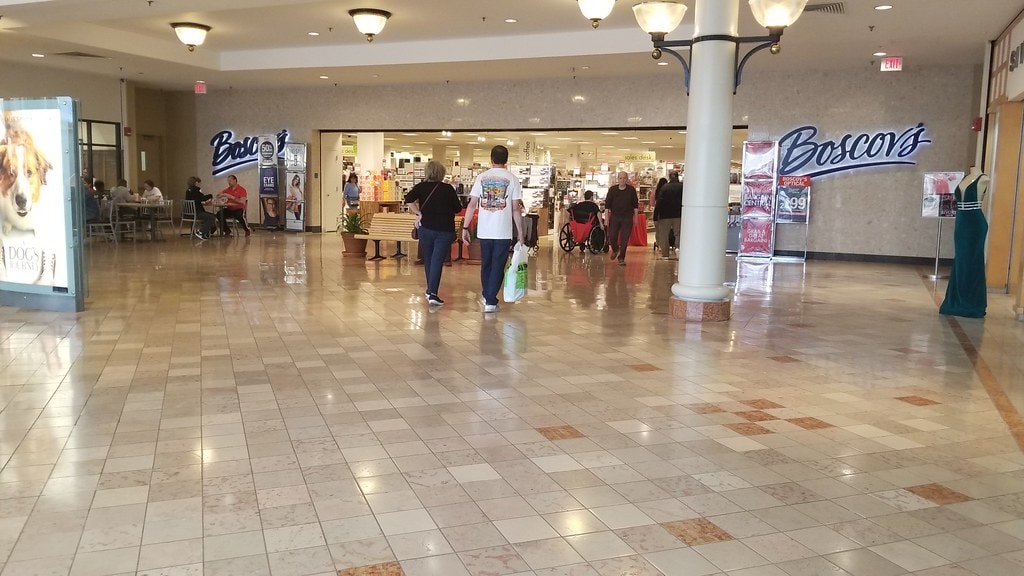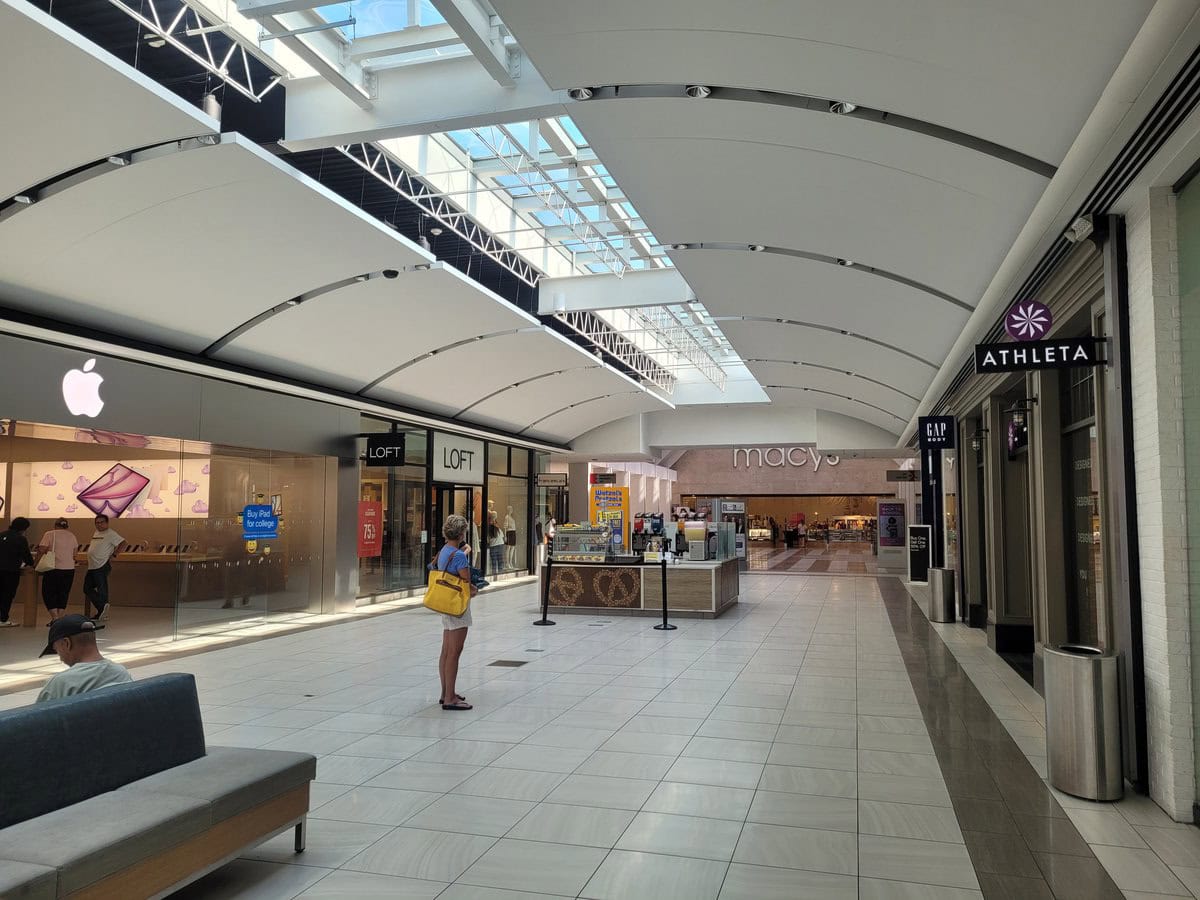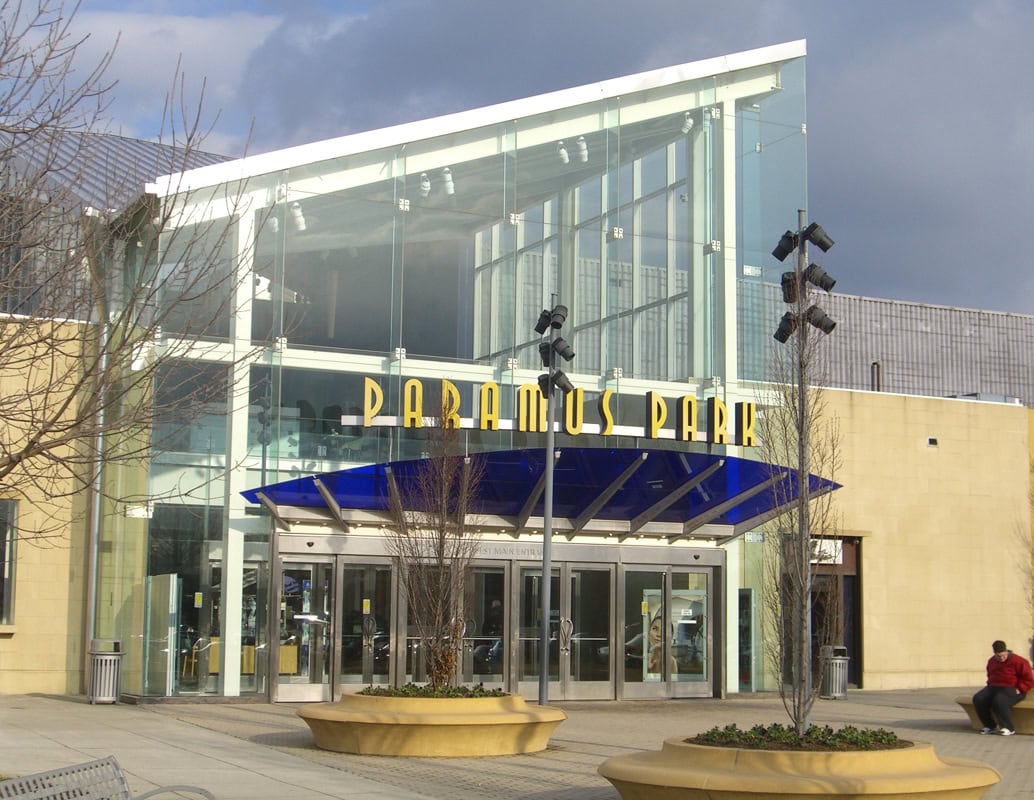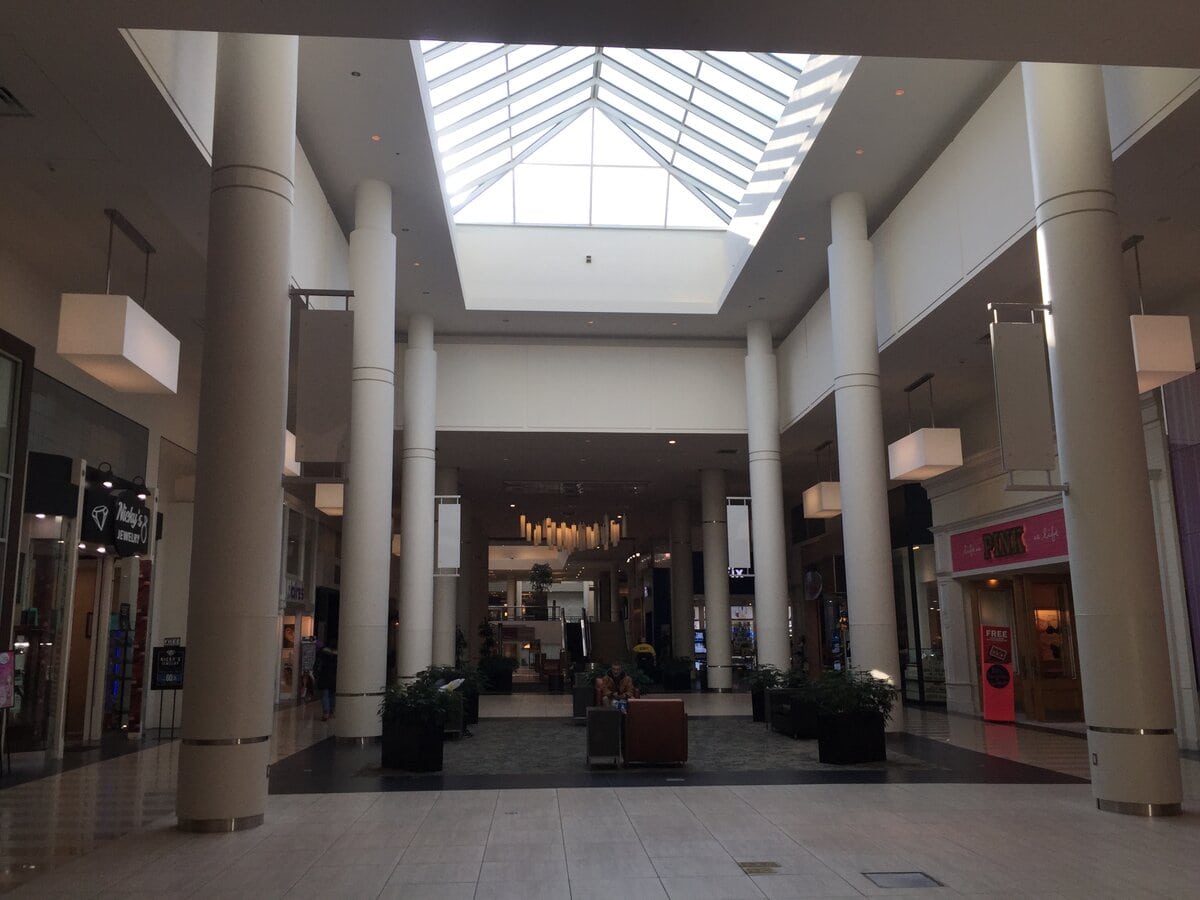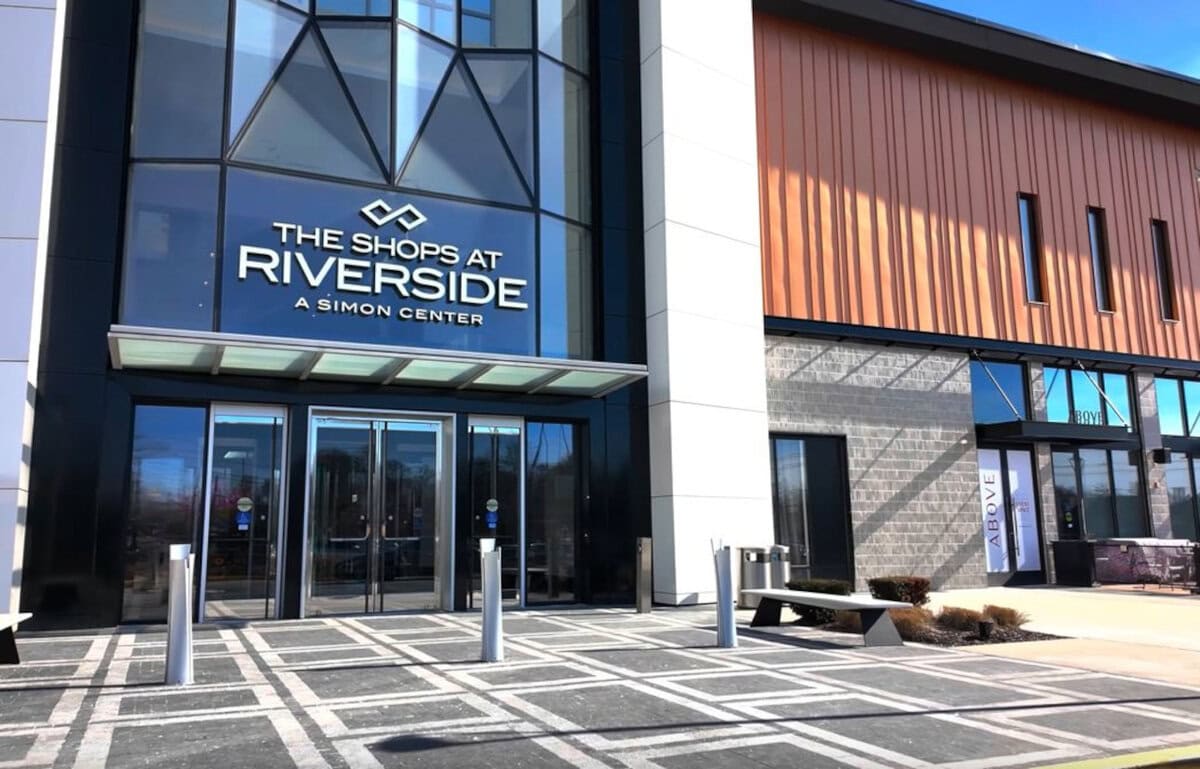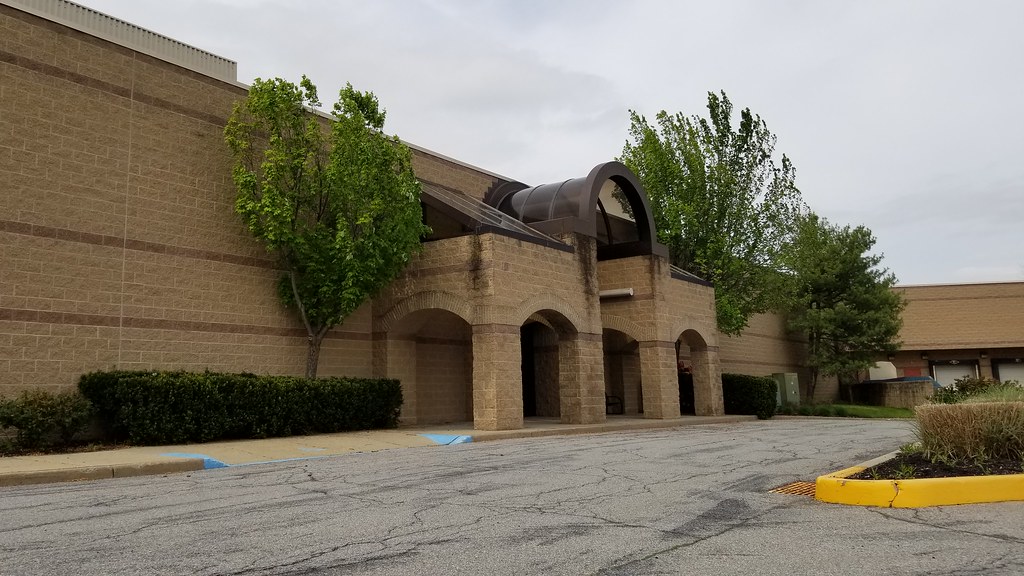Woodbridge Center Takes Shape
Long before the mall appeared, the stretch between Routes 1 and 9 was a sleepy spread of farmland and dug-out clay pits.
The land once held Maple Hill Dairy and the old pits dug by A.P. Green Fire Brick Co. for clay that fired into industrial bricks.
Come the 1960s, the pits were deserted, and Woodbridge Township began chasing new commercial ventures to succeed its waning brick trade.
The Rouse Company purchased the site and drew plans for a two-level enclosed mall, unlike anything nearby.
Construction began after permits cleared, reshaping the uneven terrain into concrete slabs and long parking rows.
Rouse's team added skylights and fountains to make the interior feel open and bright through all seasons.
Woodbridge Center opened on March 4, 1971, with three anchors: Abraham & Straus, Ohrbach's, and Stern's.
Its retail space featured terrazzo floors, polished handrails, and fountains that crossed in midair at the main court.
Shoppers stepped into cool air and the sound of running water.
From the hollowed clay fields came a massive enclosed retail center, one of the largest in New Jersey, built to keep expanding and reimagining itself.
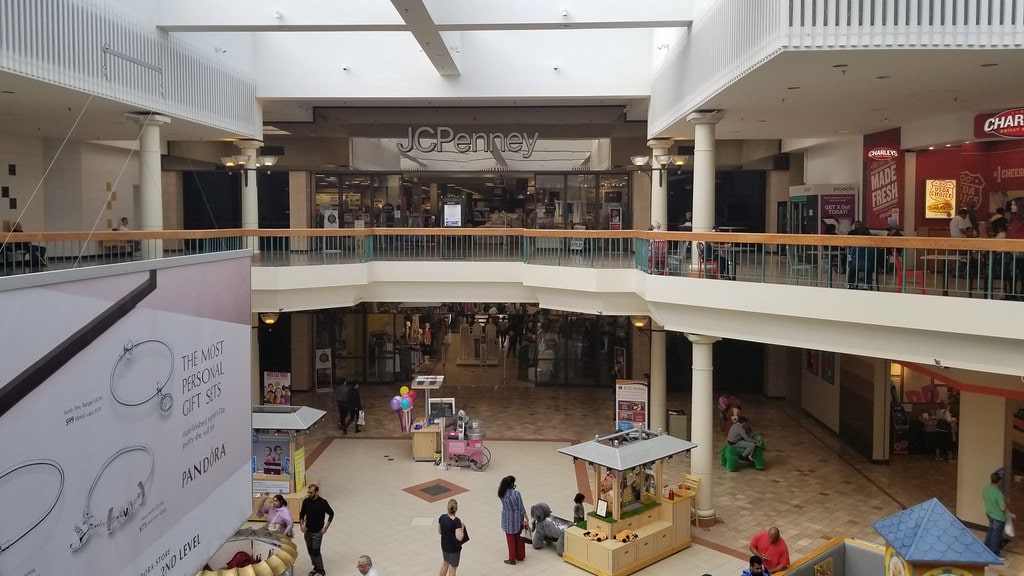
Expansion and Peak Years
Construction work started in 1978, expanding Woodbridge Center for the first time since its opening.
New structural frames extended the concourse and added space for two major anchors.
The new development added Hahne's, a store founded in New Jersey, and JCPenney, which had just finished moving from Menlo Park Mall.
The new wing increased the mall's size and linked seamlessly with the existing levels, giving shoppers a continuous interior route.
By 1987, Rouse Company began a full renovation to modernize the property.
Crews replaced old flooring, installed brighter lighting, and redesigned entrances.
The stairwell near the A&S court was removed, and several fountains were changed or taken out to open the walkways.
Once the upgrades hit, you could see clearly across the place.
The only fountain left was the one near Macy's, still spilling water into the hush of the main floor.
The anchors held, occupancy stayed high, and Rouse's steady hand kept the place sure-footed.
At the close of the 1980s, the mall stood near the top of New Jersey retail.
It was about to step into a time when the retail world stopped sitting still.
Stores would change, ideas would shift, and the place would have to learn to bend.
Anchors Turn Over
In 1994, Federated Department Stores absorbed Abraham & Straus, converting some stores into Macy's but replacing the Woodbridge location with Sears.
The shift gave the mall a more general merchandise anchor and ended an era for the original lineup.
Ohrbach's had already been replaced by Steinbach, and later by Lord & Taylor, marking another transformation among the founding anchors.
Hahne's closed its doors after years of operation, and Fortunoff moved in, filling the space with jewelry and home furnishings.
During this period, Rouse Company introduced small upgrades across public areas.
Fountains were serviced, lighting adjusted, and the carousel and trackless train were added near JCPenney to appeal to families.
These features became long-running fixtures of the property.
Despite the national wave of department store mergers, Woodbridge Center maintained steady occupancy and continued to attract regional shoppers.
In 2004, Rouse Company was sold to General Growth Properties, transferring the mall into a new phase of ownership.
The handoff closed the chapter on Rouse's direct involvement and opened the door for another cycle of redevelopment.
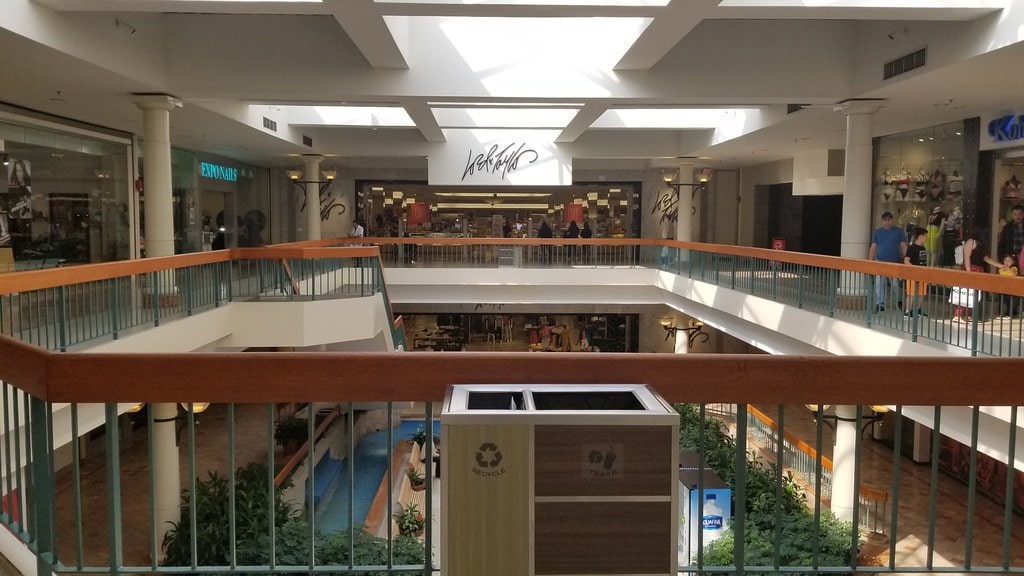
New Owners and Retail Shift
General Growth Properties took control of Woodbridge Center in 2004 after acquiring the Rouse Company and its entire portfolio.
The transfer of ownership came just as the mall added a 100,000-square-foot Galyan's Trading Company sporting goods store, completed in 2003.
When Dick's Sporting Goods acquired Galyan's in 2004, the newly branded store stayed open with only minor alterations, keeping its full product line in place.
The mall continued to adapt during the late 2000s, though Fortunoff's closure in 2009 left a major anchor vacant.
In May 2012, Boscov's announced a 180,000-square-foot store for the former Fortunoff space and opened it in August 2013.
The addition marked Boscov's return to New Jersey and gave Woodbridge Center a complete anchor set once again.
By the mid-2010s, the mall's anchor lineup: Macy's, JCPenney, Sears, Lord & Taylor, Boscov's, and Dick's Sporting Goods, reflected a balance of legacy and national brands.
With General Growth's ownership secure, Woodbridge Center entered a period of renewed stability before the next shift in retail strategy.
Entertainment Era
On February 9, 2017, Mayor John E. McCormac announced that Dave & Buster's would open at Woodbridge Center by year's end.
The 34,000-square-foot complex was built in the upper level of the Sears wing and became New Jersey's first Dave & Buster's location when it opened on November 14, 2017.
The venue featured arcade games, a sports bar, and restaurant seating, supported by a state law passed in 2015 that allowed such venues to serve alcohol.
Two years later, SeaQuest Interactive Aquarium opened with animal encounters spanning more than 300 species, offering visitors interactive exhibits and educational programs.
Throughout the decade, attractions like the relocated carousel, the Tiny Town play area, and the trackless train remained fixtures near JCPenney.
Restaurants such as Olive Garden, Applebee's, and Red Robin operated independently throughout the mall.
By 2019, Woodbridge Center had evolved beyond retail alone, emphasizing entertainment and dining.
But the national retail downturn was approaching, and its anchor base would soon begin to change again.
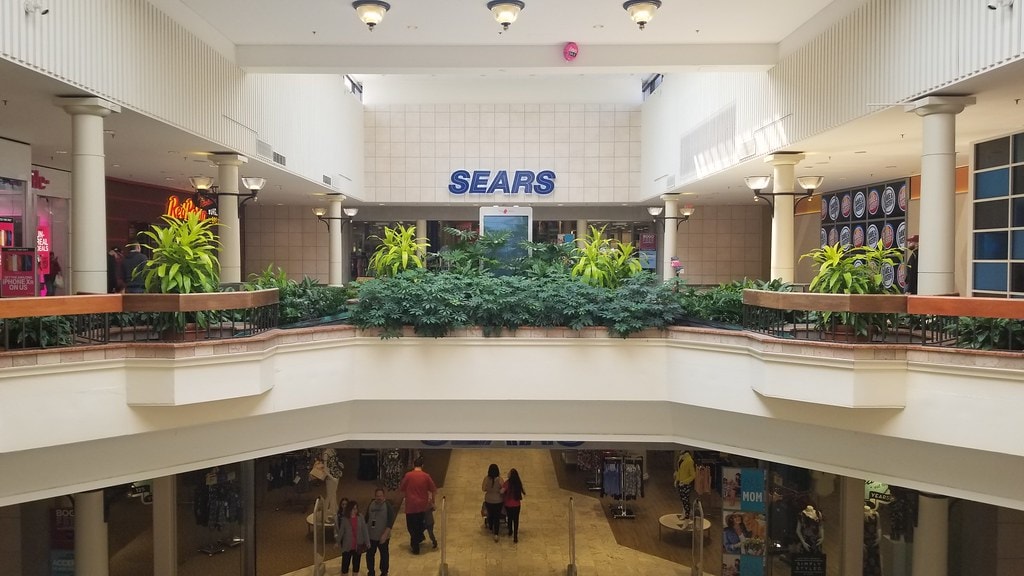
Closures and Financial Strain
Lord & Taylor confirmed in October 2019 that it would shut its Woodbridge Center store, completing liquidation sales on December 24.
Within months, Sears Holdings announced the closure of its own anchor space.
The store ended operations in mid-April 2020, ending nearly three decades of activity on the property.
Losing both anchors in rapid succession triggered the mall's most difficult period.
Brookfield Properties, which had acquired General Growth Properties in 2018, soon fell behind on payments tied to a $225 million loan secured by the property.
When June 2020 arrived, the debt had gone into special servicing in anticipation of default.
Toward the end of 2021, Rialto Capital Advisors filed for foreclosure, and that October, a receiver appointed by the court stepped in to oversee rent collection and daily management.
Financial documents showed deep losses.
The mall's value sank from $366 million in 2014 to $86 million in 2021, with occupancy at 63 percent and falling.
Debt coverage dropped below half of what lenders required, leaving the property in technical default.
As 2024 began, the foreclosure process concluded, bringing in a buyer.
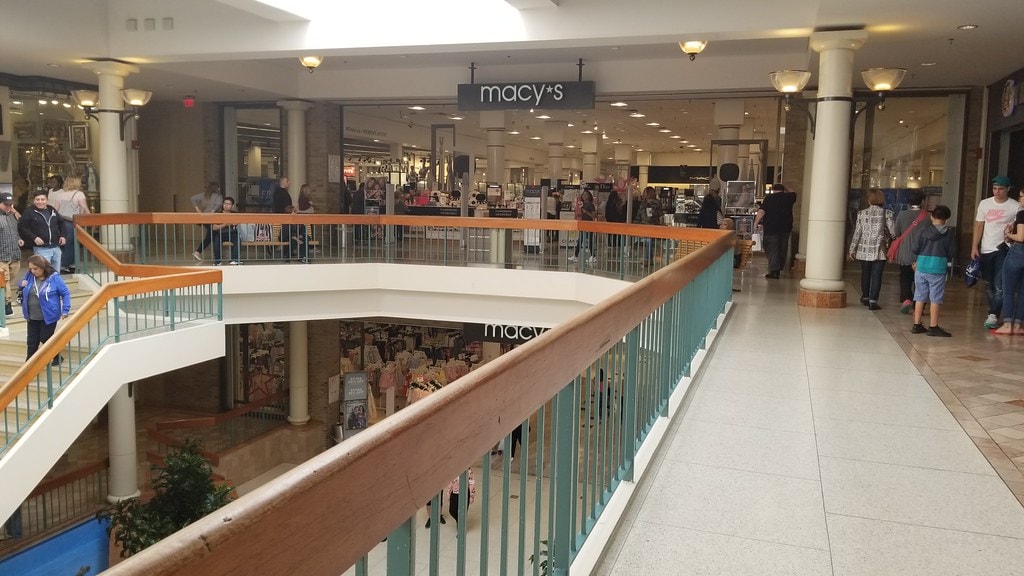
Reworking the Future
In February 2024, Woodbridge Center sold for $70.4 million to JLL Properties, ending years of financial uncertainty.
The sale represented a major loss for bondholders but kept the mall open, with Spinoso Real Estate taking over management of the 1.6-million-square-foot property.
That November, Accu Reference Medical Laboratory purchased the vacant Lord & Taylor building for $11.5 million and began converting it into office and lab space that will employ about 300 people.
Meanwhile, Express filed Chapter 11 bankruptcy and included its Woodbridge Center store among nearly 100 closures nationwide.
In March 2025, Mayor McCormac announced a township plan to issue four new liquor licenses for shopping centers larger than 1.5 million square feet, a move designed to bring more restaurant tenants to Woodbridge Center.
With anchors Macy's, Boscov's, JCPenney, and Dick's Sporting Goods still in place, the mall continued operating into 2025 as a mixed retail and redevelopment site entering its sixth decade.
